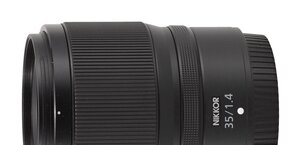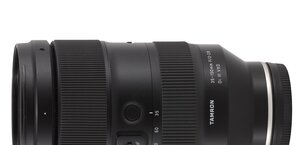Samsung NX 18-55 mm f/3.5-5.6 OIS
11. Summary
- good resolution in the frame centre,
- decent resolution on the edge of the frame in most cases,
- low vignetting,
- negligible chromatic aberration, especially at longer focal lengths,
- good control of coma at the longest focal length.
Cons:
- low stabilization efficiency,
- plastic mount,
- resolution on the edge of the frame at shorter focal lengths and near the maximum relative aperture below expectations,
- average work against bright light,
- significant distortion at the shortest focal length,
- noticeable distortion at the longest focal length,
- average coma control at the shortest focal length.
After testing the Samsung NX 18-55 mm f/3.5- 5.6 OIS we can say it is perhaps a showcase example of a kit lens. It is not especially exciting, it has several slip-ups and it doesn’t break any records; still it offers a decent level of resolution across the frame for the majority of apertures and focal lengths’ combinations. You can also find some nice accents here, like a very good control of chromatic aberration but it also features one flaw you can’t omit – a not very efficient optical stabilization. The distortion also leaves plenty to be desired especially at the wide angle.
Please Support UsIf you enjoy our reviews and articles, and you want us to continue our work please, support our website by donating through PayPal. The funds are going to be used for paying our editorial team, renting servers, and equipping our testing studio; only that way we will be able to continue providing you interesting content for free. |
- - - - - - - - - - - - - - - - - - - - - - - - - - - - - - - - - - - - - - - - - - - - - - - -
The difference between the tested kit and the Sony E 18–55 mm f/3.5–5.6 OSS of the NEX system is an obvious question here. To tell you the truth it would be hard to find an evident victor of this duel; perhaps the Samsung would win on points. We had a lot of reservations concerning the Sony: the record chromatic aberration level, low sharpness on the edge of the frame and spectacularly bad work against bright light. In these particular categories the Samsung fared better or even much better. On the other hand, though, the Sony’s resolution in the frame centre prevails and it can’t be explained by just a better work of the sensor. Its stabilization is also more efficient and useful. When it comes to the barrel the Sony is theoretically made of better materials but it was the Samsung which remained scratch-free after a period of prolonged usage. As you see there is no clear winner here – everybody will have to decide this case on his or her own.
Sample shots






